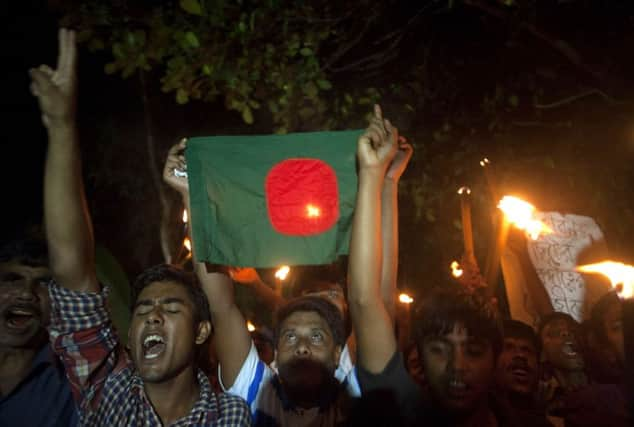Citizenship for stateless between India and Bangladesh


Television images showed people bursting firecrackers and raising an Indian flag in the Masaldanga enclave, which became part of India. On the other side of the new border, thousands of people who have been living in the enclaves in Bangladesh cheered, danced and chanted “Bangladesh, Bangladesh”.
They lit 68 candles and released 68 balloons, then marched through the village of Dashiarchhara, highlighting that it took 68 years to settle the border dispute. The village in Kurigram district is 150 miles north of Dhaka, Bangladesh’s capital.
Advertisement
Hide AdAdvertisement
Hide AdThe enclaves, home to some 50,000 people, were created through local peace treaties in the 18th century.
India’s external affairs ministry described 31 July as a historic day for both India and Bangladesh as “it marks the resolution of a complex issue that has lingered since independence” from British colonialists in 1947.
“We are very happy, our children will no more need to hide their identity to go to schools,” said Bashir Mia, 46. Many people posed as Bangladeshis to get their children admitted to schools in Bangladesh.
“We are free now, we are Bangladeshis,” he said.
Nearly 37,000 people lived in 111 Indian enclaves inside Bangladesh, while 14,000 lived in 51 Bangladeshi enclaves in India. They now get citizenship of their choice as a result of the agreement between the two countries.
In the Moshaldanga enclave, a five-year-old boy named Jihad Hussein Obama epitomises the freedom its citizens hope to experience now that the territories have been swapped.
He is the first child to be born at an Indian hospital – with his real parents’ name and location on the records.
Bangladeshi enclave dwellers have had to usually fabricate their names and addresses to get treatment at Indian hospitals or even get admitted to Indian schools and colleges.
His mother, Asma Bibi, said: “I was in labour pain and my husband took me to a hospital at the closest Indian town of Dinhata. But the doctors refused to even see me, saying I am a Bangladeshi and I am not supposed to get treatment there. I decided not to hide my identity that I am from an enclave.”
Advertisement
Hide AdAdvertisement
Hide AdA verbal duel ensued which finally saw thousands of enclave dwellers gathered at the hospital.
“After much pressure, my wife was admitted and Jihad was born – with our names registered at the hospital as his parents. This is the first time a baby was born in the enclaves with his real parents’ name. Even my two elder kids were born with someone else’s name as their parents. Officially I am not their father,” said Shahjahan Sheikh.
Abdul Jalil, a 51-year-old Bangladeshi farmer in the Karala enclave in India’s Cooch Behar district, said he was changing nationality to keep his land.
“I was born here, my father and my grandfather died here,” he said about the enclave he grew up on, a small plot of land with a dozen houses and a mosaic of jute and rice fields. “From Saturday, I’m an Indian.”
Relations between India and its smaller neighbour have significantly improved since Bangladeshi prime minister Sheikh Hasina promised that her administration would not allow India’s separatist insurgents to use the porous 2,500-mile border to carry out raids in India. Aided by India, Bangladesh gained independence from Pakistan following a bloody nine-month war in 1971. The boundary dispute has been lingering since British colonialists carved Pakistan out of India in 1947, and granted independence to the two countries.
None from Bangladeshi enclaves within India opted for Bangladesh, while 979 people from Indian enclaves living inside Bangladesh applied for Indian citizenship, said Akhteruzzman Azad, the chief government administrator for Bangladesh’s Kurigram district. The shifting of the people to the Indian side will be completed by November this year. Several television news channels in both countries broadcast the celebrations live.
“This will end nearly seven decades of deprivation the people living in the enclaves have had to suffer being virtually owned by no one,” said the Bangladeshi English language Daily Star newspaper.